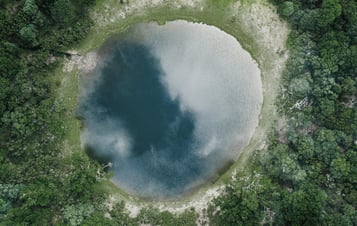Carbon capture
Vattenfall's goal is to capture carbon dioxide at one of our heating plants in Sweden by 2030.
Carbon capture provides the opportunity to either store carbon dioxide permanently and, with biogenic carbon dioxide, to create negative emissions, or to reuse carbon dioxide (CCU) for the production of, for example, sustainable synthetic aviation fuel, which greatly reduces the need for fossil aviation fuel.
What are CCS, BECCS and CCU?
Carbon Capture and Storage (CCS) entails capturing carbon dioxide in flue gases from power plants, combustion plants or large process industries. This separated carbon dioxide is compressed and then transported in liquid form to a suitable storage location deep in the ground.
In Bio Energy Carbon Capture and Storage (BECCS), biomass is used as fuel and potentially even waste with biogenic fuels as the main component. Capturing and permanently storing carbon dioxide not only leads to reduced carbon dioxide emissions, but it also functions as a carbon sink, giving negative emissions and thereby the possibility to neutralise other fossil carbon dioxide emissions.
In the case of Carbon Capture and Utilisation (CCU), carbon dioxide in flue gases is captured and separated for use in other sectors, such as aviation where it can help to significantly reduce the need for fossil fuels.
Why BECCS?
Compared to many other alternatives, BECCS is a cost-effective technology for reducing carbon dioxide. Sweden has particularly good conditions and should harness these to the greatest degree possible. The potential is high for negative emissions through capturing, transporting and storing carbon dioxide of biogenic origin at point emission sources such as forest industries and heating plants. This is according to the Swedish Climate Policy Council, which in its investigation to the Swedish government highlights BECCS as the technology in Sweden that has the greatest realisable potential for achieving permanent negative carbon dioxide emissions.
However, updated regulations and new economic instruments are required to make large carbon sinks possible and to enable BECCS to be introduced. The Swedish state has announced a state aid system through a reversed auction.
Carbon capture
There are currently no large-scale commercial carbon capture plants in Sweden, but there are around 20 plants in operation globally, including in Norway. Vattenfall has experience of several carbon capture technologies through a large-scale pilot plant in Germany and test facilities in the Netherlands and the UK between 2008 and 2014.
In Sweden, Vattenfall is currently evaluating the company’s heating plants in Uppsala, Jordbro and Nyköping for carbon dioxide capture. The carbon dioxide may then be stored permanently (BECCS) or reused (CCU) for example for aviation fuel production.

Read more
Related information

We are forming partnerships in different fields and industries to reach climate goals.

Vattenfall is phasing out fossil production and investing in renewables.

We are committed to electrifying society as a way to help turn the tide on climate change.



